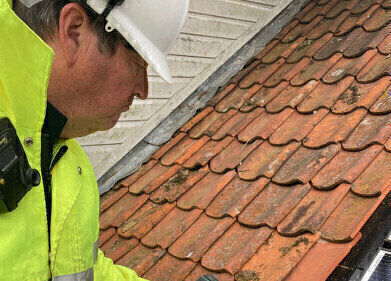Dust monitoring
Five Air Pollution Risks Caused by Natural Disasters
Jun 19 2019
Air pollution is often regarded as a purely manmade phenomenon. While it’s true that the Industrial Revolution and all the of anthropogenic activity that has followed have greatly accentuated the abysmal quality of air all over the world, natural phenomena can also play their part in creating air pollution.
Unfortunately, it’s when these events combine with the emissions produced from human activity that the situation really begins to spiral out of control. With our own activities contributing to climate change and increasing the incidence of natural disasters and extreme weather events, it becomes something of a vicious cycle that feeds on itself. In any case, here are five of the ways in which air pollution can be exacerbated by natural events.
-
Sudden release of accumulated contaminants
Normally, pollutants and toxins are released into the atmosphere through natural cycles that take place across air, land and water, until finally they end up buried at the bottom of the waves in oceanic or lake sediments. However, extreme phenomena such as volcanic eruptions, tsunamis or earthquakes can release these accumulated pollutants in a single surge of activity. One such example of this behaviour is the May 2018 eruption of the Hawaiian volcano Kilauea, which still plagues the vicinity with poor air quality today as a result of the emission of substantial amounts of dust and dangerous gases.
-
Release of hazardous materials
Sometimes, natural disasters can trigger much bigger industrial ones by damaging or interfering with storage centres, transitional pipelines and technological capabilities. In 2011, a 15m-high tsunami hit the now-notorious nuclear reactor in Fukushima, disabling three of its cooling towers and knocking out its power supply. This led to three separate nuclear meltdowns, various explosions and the release of radioactive substances for three days straight.
-
Forest fire haze
Forest fires can have both natural and manmade causes. If they are allowed to ravage unattended, they can not only destroy vast swathes of forested areas, thus indirectly contributing to climate change by removing a chief absorber of carbon dioxide, but also diminish air quality in a more direct manner via the release of harmful contaminants. Australia, for example, suffers from a climate that is prone to spontaneous combustion among its forested areas and is constantly struggling to prevent and contain bush fires. One of the most serious incidents occurred in 1994 in New South Wales, when almost a million acres of land were razed to the ground and the city of Sydney was covered in a cloud of ash for several days.
-
Droughts = dust
While our ability to predicted prolonged periods of dry weather and drought is increasing, that doesn’t make it any easier to deal with the consequences. In parts of the world that are particularly prone to reduced rainfall for months at a time, there is a higher risk of sandstorms occurring – not to mention the accumulation of dust and contaminants in the air. The Great Plains in the southern part of the United States are colloquially known as “the Dust Bowl” for this exact reason.
-
Floodwater breeds bacteria
Standing water attracts microbial bacteria and other unwanted activity. When floods affect residential areas where people are exposed to the air around them, the bacteria can be dispersed by the wind and inhaled by those living in the vicinity. Similarly, when floodwater penetrates buildings, the damp caused by it can persist in walls and furniture, increasing the likelihood that people will suffer from respiratory conditions such as asthma, allergies, difficulty breathing and hypersensitive pneumonitis.
Digital Edition
AET 28.4 Oct/Nov 2024
November 2024
Gas Detection - Go from lagging to leading: why investment in gas detection makes sense Air Monitoring - Swirl and vortex meters will aid green hydrogen production - Beyond the Stack: Emi...
View all digital editions
Events
Jan 12 2025 Abu Dhabi, UAE
Jan 14 2025 Abu Dhabi, UAE
Jan 20 2025 San Diego, CA, USA
Carrefour des Gestions Locales de L'eau
Jan 22 2025 Rennes, France
Safety, Health & Wellbeing LIVE
Jan 22 2025 Manchester, UK



















